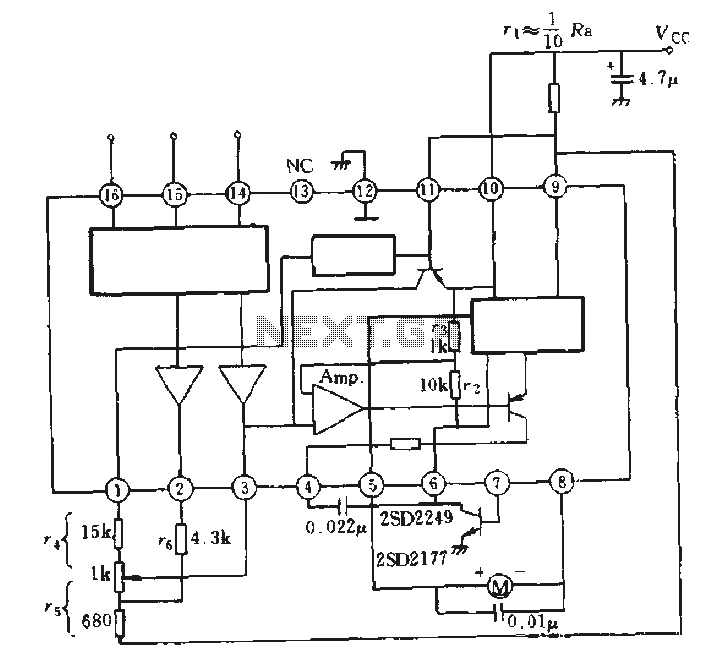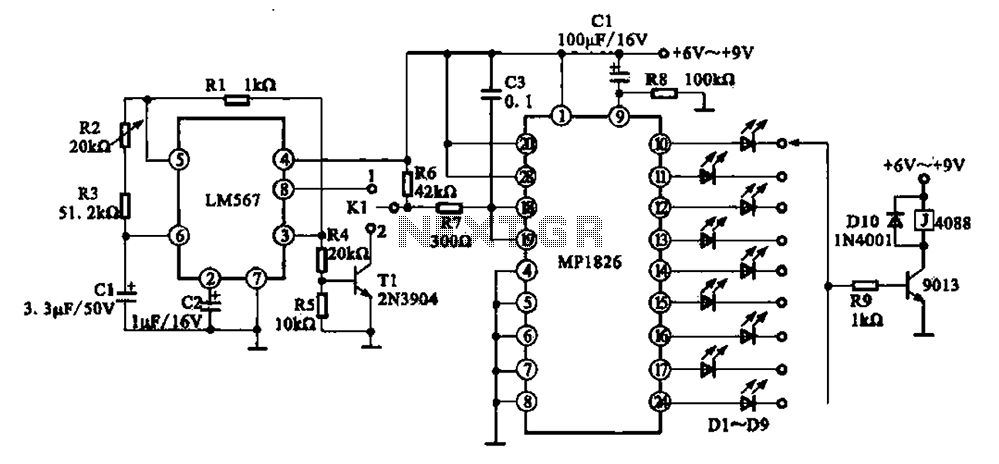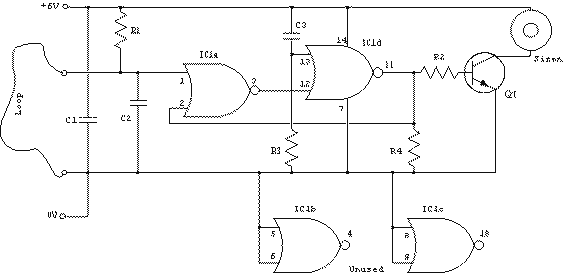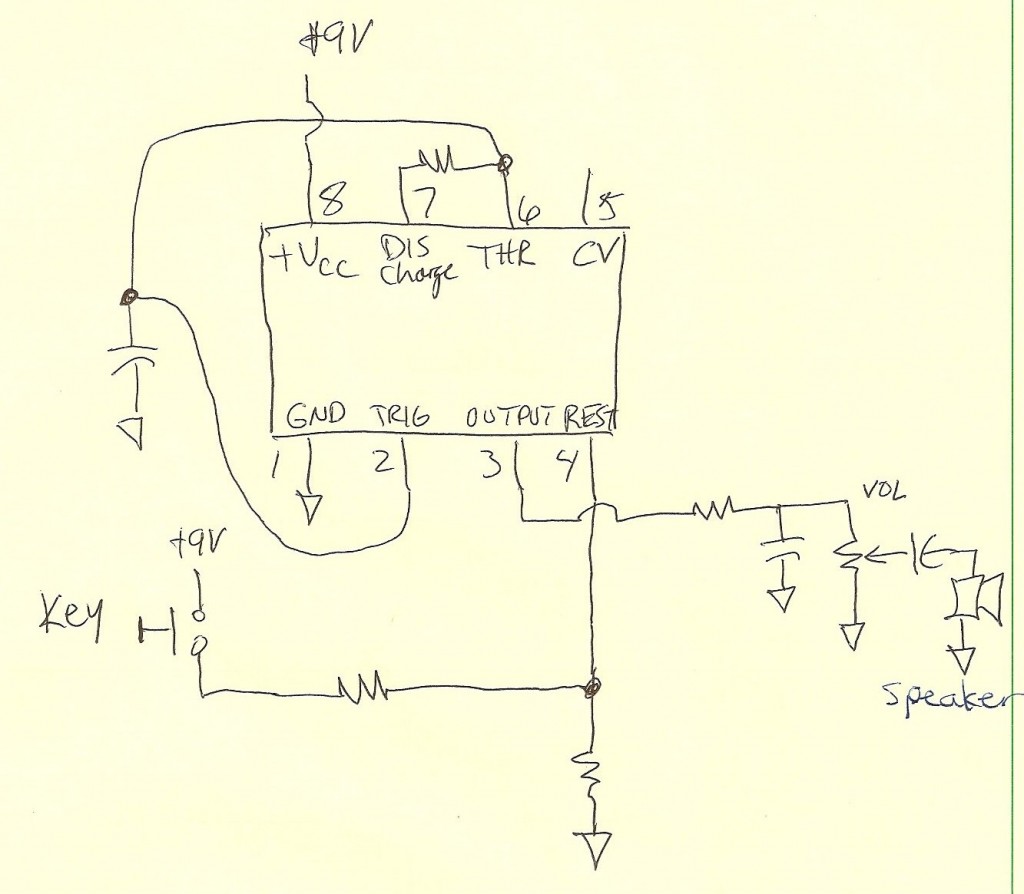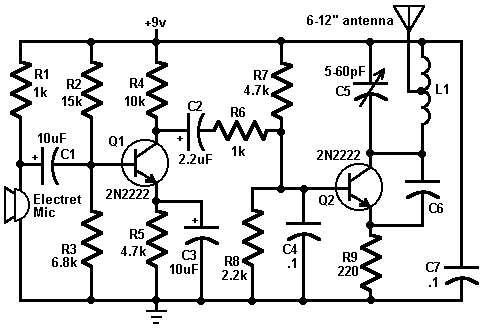
I2C PIC Interfacing Tutorial Circuit
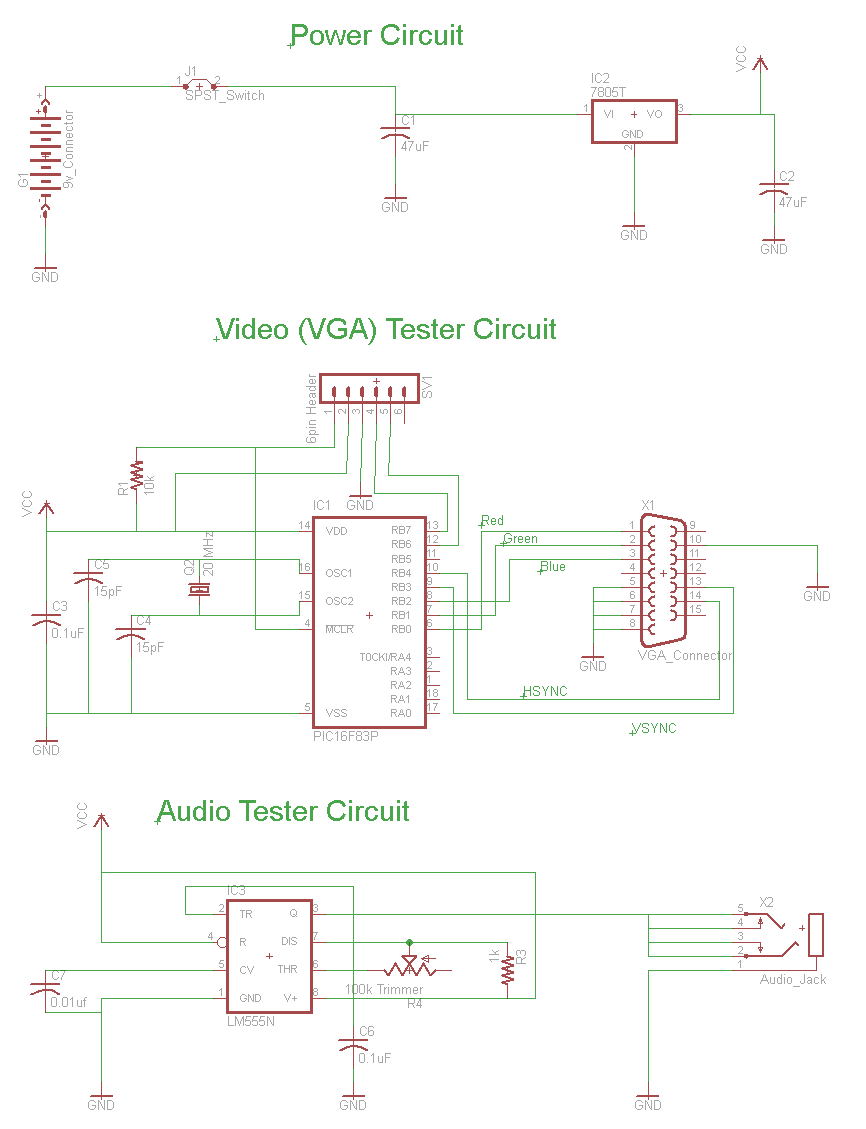
The I2C PIC Interfacing Tutorial circuit is relatively straightforward; however, it requires careful verification to ensure that all connections are correct before initial operation. The primary components utilized in this circuit include the PIC18F452 microcontroller, the 24LC02B EEPROM, and a 16x2 LCD display. The power supply circuit incorporates an LM7805 voltage regulator, which steps down any input voltage above 6.5V to a stable 5V, with any excess voltage dissipated through a heatsink. This is a conventional power circuit commonly used in various tutorials, without any unique features. The I2C interface connecting the PIC to the EEPROM (24LC02B) consists of two wires: SDA (Serial Data Line) and SCL (Serial Clock Line). It is crucial to include two resistors, one 1kΩ and one 10kΩ, connected to the 5V supply to ensure proper functionality of the I2C interface. At least a 10kΩ pull-up resistor must be connected to the 5V line; otherwise, the system will not operate correctly. This requirement arises because the SCL and SDA lines are "open-drain," meaning that I2C devices can pull the signals low (to 0V) but cannot drive them high (to 5V). The LCD utilized in this tutorial operates in 4-bit mode, primarily for simplicity, as using 8 wires would complicate the breadboard setup. The 4-bit interface necessitates sending data in two separate 4-bit sequences rather than a single 8-bit sequence. The software provides additional details regarding this implementation.
The I2C PIC interfacing circuit is designed to facilitate communication between the PIC18F452 microcontroller and the 24LC02B EEPROM, while also displaying data on a 16x2 LCD. The circuit operates on a regulated 5V power supply provided by the LM7805 voltage regulator, which ensures stable operation even with varying input voltages. The use of a heatsink is essential for the LM7805, as it dissipates heat generated during voltage regulation, thereby maintaining the reliability of the circuit.
The I2C protocol is a widely adopted communication standard in embedded systems, allowing multiple devices to communicate over a two-wire interface. The SDA line transmits data, while the SCL line provides the clock signal necessary for synchronization between the master (PIC18F452) and slave (24LC02B) devices. The inclusion of pull-up resistors is critical in open-drain configurations to ensure that the lines can be pulled high when not actively driven low by the devices, thus enabling proper signal levels.
The choice of using a 4-bit data interface for the LCD simplifies wiring and reduces clutter on the breadboard, which is particularly beneficial for prototyping. In this configuration, the microcontroller sends data in two sequential 4-bit transmissions, effectively allowing for the same data throughput as an 8-bit transmission but with fewer physical connections. This design choice balances practicality and functionality, making it suitable for educational demonstrations and small-scale projects.
In conclusion, this I2C PIC interfacing circuit exemplifies a fundamental approach to integrating microcontrollers with peripheral devices, showcasing essential concepts in embedded system design, such as power regulation, communication protocols, and efficient data handling. Proper attention to detail in the circuit assembly and software implementation is crucial for achieving reliable operation and successful data exchange.The I2C PIC Interfacing Tutorial circuit is not terribly difficult however it will take some double checking to make sure you have everything hooked up properly before working the first time. The main devices used in the circuit are the 18F452, 24LC02B and 16x2 LCD. The power circuit uses a LM7805 +5 voltage regualtor. Stick in an voltage over +6. 5v and it gets regulated down to +5v with excess power exhausted through the heatsink. This is a standard power circuit that I`ve used in most all my tutorials, nothing extra-ordinary. here The I2C Interface From PIC to the EEPROM (24LC02B) is 2 wires, SDA and SCL. *Special Note*: The two resistors 1k and 10k connected to +5v are critical if you want your I2C interface to work properly. You must have at least a 10k resistor connected to +5v or nothing will work. This is due to the fact that SCL and SDA are `open drain`, which means I2C devices can drive signals low to +0v but not high to +5v.
The LCD used in this tutorial will only use 4 data-bits, mostly because I was too lazy to use 8 wires and things would start to look too cluttered on a breadboard with that many wires. The 4-bit interface just requires you to send data in two 4-bit sequences instead of in 1 8-bit sequence.
Look at the software to see this difference. 🔗 External reference
The I2C PIC interfacing circuit is designed to facilitate communication between the PIC18F452 microcontroller and the 24LC02B EEPROM, while also displaying data on a 16x2 LCD. The circuit operates on a regulated 5V power supply provided by the LM7805 voltage regulator, which ensures stable operation even with varying input voltages. The use of a heatsink is essential for the LM7805, as it dissipates heat generated during voltage regulation, thereby maintaining the reliability of the circuit.
The I2C protocol is a widely adopted communication standard in embedded systems, allowing multiple devices to communicate over a two-wire interface. The SDA line transmits data, while the SCL line provides the clock signal necessary for synchronization between the master (PIC18F452) and slave (24LC02B) devices. The inclusion of pull-up resistors is critical in open-drain configurations to ensure that the lines can be pulled high when not actively driven low by the devices, thus enabling proper signal levels.
The choice of using a 4-bit data interface for the LCD simplifies wiring and reduces clutter on the breadboard, which is particularly beneficial for prototyping. In this configuration, the microcontroller sends data in two sequential 4-bit transmissions, effectively allowing for the same data throughput as an 8-bit transmission but with fewer physical connections. This design choice balances practicality and functionality, making it suitable for educational demonstrations and small-scale projects.
In conclusion, this I2C PIC interfacing circuit exemplifies a fundamental approach to integrating microcontrollers with peripheral devices, showcasing essential concepts in embedded system design, such as power regulation, communication protocols, and efficient data handling. Proper attention to detail in the circuit assembly and software implementation is crucial for achieving reliable operation and successful data exchange.The I2C PIC Interfacing Tutorial circuit is not terribly difficult however it will take some double checking to make sure you have everything hooked up properly before working the first time. The main devices used in the circuit are the 18F452, 24LC02B and 16x2 LCD. The power circuit uses a LM7805 +5 voltage regualtor. Stick in an voltage over +6. 5v and it gets regulated down to +5v with excess power exhausted through the heatsink. This is a standard power circuit that I`ve used in most all my tutorials, nothing extra-ordinary. here The I2C Interface From PIC to the EEPROM (24LC02B) is 2 wires, SDA and SCL. *Special Note*: The two resistors 1k and 10k connected to +5v are critical if you want your I2C interface to work properly. You must have at least a 10k resistor connected to +5v or nothing will work. This is due to the fact that SCL and SDA are `open drain`, which means I2C devices can drive signals low to +0v but not high to +5v.
The LCD used in this tutorial will only use 4 data-bits, mostly because I was too lazy to use 8 wires and things would start to look too cluttered on a breadboard with that many wires. The 4-bit interface just requires you to send data in two 4-bit sequences instead of in 1 8-bit sequence.
Look at the software to see this difference. 🔗 External reference
